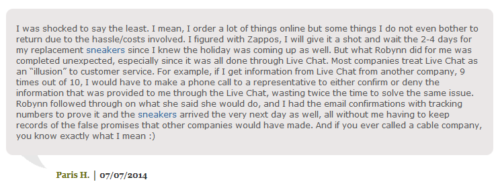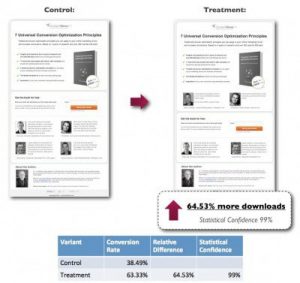Recall the last time you were shopping online. Perhaps it was for a new outfit or kitchen appliance or maybe it was for an upgraded piece of equipment, like a new TV or laptop. Or maybe you were looking for some type of service provider.
Whatever you were shopping for, where did your hunt begin? I’m guessing you didn’t immediately head to the checkout page after viewing your very first option. If you’re like most consumers, you probably started the process by reading reviews and testimonials. And why is that?
Because Customer Reviews And Testimonials Are Honest, No Holds Barred
Testimonials and reviews aren’t created by companies or their employees. They are created by real people who’ve used the product or service and have nothing to gain or lose by giving an honest account of their experiences. Therefore, customer reviews and testimonials are inherently trustworthy.

According to Marie Dean of Conversion Lifters, “Testimonials & word of mouth are the driving force behind 20-50% of all purchasing decisions, and yet only about ⅓ of businesses are actively seeking & collecting customer reviews on an ongoing basis.”
So don’t be one of those businesses that overlooks the value of social proof, which Granify research indicates is even more important than low prices.
Customer Reviews And Testimonials Can Significantly Increase Conversion Rates
 Justin Christianson: “Nobody wants to be first. [Customers] want to know that someone got the results or experience you are claiming your product/service delivers before they take the plunge and buy it for themselves. Customer reviews and testimonials are extremely effective at providing that extra level of trust in the buying decision-making process.
Justin Christianson: “Nobody wants to be first. [Customers] want to know that someone got the results or experience you are claiming your product/service delivers before they take the plunge and buy it for themselves. Customer reviews and testimonials are extremely effective at providing that extra level of trust in the buying decision-making process.
We have shown improvements more times than not by introducing these elements on campaigns, and in some cases, we’ve seen improvements of up to 300%.”
In order for social proof to be effective, however, it must come across as authentic. So…
Put A Face To The Name
Time and time again, research shows that including faces of real people (especially those that are emotive) leads to increased empathy as well as higher perceptions of credibility among customers.
Marie Dean: “Professor BJ Fogg came up with the Prominence – Interpretation Theory, in which he postulates that the prominence of certain elements on a webpage have a direct impact on if that page is interpreted as credible or not.
If you’re in software or ecommerce, there are plenty of ‘credible’ competitors and non-competitors featuring faces with testimonials in prominent areas of their websites.
If credibility is determined by prominence & interpretation, this means there is a subconscious expectation of your site to showcase a real person giving a real piece of feedback.”
Make The Feedback Pop
Seeing as customer reviews and testimonials carry a lot of sway in terms of persuading your customers to convert, you need to make sure this feedback is easily accessible. After all, you don’t want a stellar testimonial, like the one written below by Zappos customer Paris H, to go unnoticed.

You want your testimonials to shout, “Look at me! I’ve got something important to say!”
Use a variety of typefaces and striking colors to catch your customers’ attention. Also, test the placement of your testimonials and develop an understanding of how people view websites. The ideal placement of your customer feedback doesn’t always come down to a matter of “above the fold” versus “below the fold.”

Enhance Your Testimonials’ Credibility
Here are three additional ways you can give your testimonials’ perceived trustworthiness a boost, aside from adding photos:
- Try to obtain celebrity endorsements
- Add video testimonials whenever possible
- Don’t be afraid to include negative reviews.
Do you have reviews and testimonials listed on your website? If so, how are you showcasing them? And if not, why?





